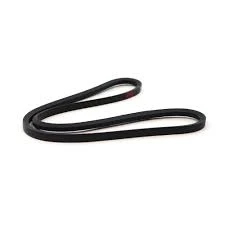- Arabic
- French
- Russian
- Spanish
- Portuguese
- Turkish
- Armenian
- English
- Albanian
- Amharic
- Azerbaijani
- Basque
- Belarusian
- Bengali
- Bosnian
- Bulgarian
- Catalan
- Cebuano
- Corsican
- Croatian
- Czech
- Danish
- Dutch
- Afrikaans
- Esperanto
- Estonian
- Finnish
- Frisian
- Galician
- Georgian
- German
- Greek
- Gujarati
- Haitian Creole
- hausa
- hawaiian
- Hebrew
- Hindi
- Miao
- Hungarian
- Icelandic
- igbo
- Indonesian
- irish
- Italian
- Japanese
- Javanese
- Kannada
- kazakh
- Khmer
- Rwandese
- Korean
- Kurdish
- Kyrgyz
- Lao
- Latin
- Latvian
- Lithuanian
- Luxembourgish
- Macedonian
- Malgashi
- Malay
- Malayalam
- Maltese
- Maori
- Marathi
- Mongolian
- Myanmar
- Nepali
- Norwegian
- Norwegian
- Occitan
- Pashto
- Persian
- Polish
- Punjabi
- Romanian
- Samoan
- Scottish Gaelic
- Serbian
- Sesotho
- Shona
- Sindhi
- Sinhala
- Slovak
- Slovenian
- Somali
- Sundanese
- Swahili
- Swedish
- Tagalog
- Tajik
- Tamil
- Tatar
- Telugu
- Thai
- Turkmen
- Ukrainian
- Urdu
- Uighur
- Uzbek
- Vietnamese
- Welsh
- Bantu
- Yiddish
- Yoruba
- Zulu
Nov . 01, 2024 01:20 Back to list
Understanding the Functionality and Applications of Flat Rubber Drive Belts
Understanding Flat Rubber Drive Belts Functionality and Applications
Flat rubber drive belts are an essential component in many mechanical systems, playing a vital role in the transmission of power and motion. These belts are characterized by their flat, flexible design, which allows them to efficiently transfer energy between pulleys or wheels. This article explores the significance, functionality, and applications of flat rubber drive belts in various industries.
What Are Flat Rubber Drive Belts?
Flat rubber drive belts are typically made from durable rubber material and can vary in width, thickness, and length according to specific requirements. Unlike V-belts and round belts, flat belts have a smooth surface that makes them suitable for high-speed applications. They are designed to operate in a nearly frictionless environment, reducing wear and enhancing longevity.
Functionality
The primary function of flat rubber drive belts is to transfer power from one shaft to another. They operate on the principle of friction. The belt runs over flat pulleys and relies on the friction between the belt and the pulleys to transmit energy. This design allows for efficient power transmission with minimal slippage, making them ideal for applications requiring precise control of speed and torque.
One of the key advantages of flat rubber drive belts is their ability to handle a wide range of applications, from light-duty tasks to heavy industrial use
. The belts can be designed to operate at various speeds and can accommodate significant tension without deforming. Furthermore, they can be used in combination with multiple pulleys to create complex drive systems, increasing their versatility.flat rubber drive belts

Applications
Flat rubber drive belts find applications across various industries, including manufacturing, agriculture, and automotive sectors. In manufacturing, they are commonly used in conveyor systems, where they transport materials from one location to another. Their flat design allows for optimal contact with the pulleys, ensuring smooth movement even under heavy loads.
In the agricultural sector, flat rubber drive belts are utilized in machinery such as combine harvesters and tractors. They help in transferring power from engines to various components, including cutting and harvesting tools, enhancing the efficiency of agricultural operations.
The automotive industry also benefits from flat rubber drive belts, especially in older models and certain industrial machines. They can be found in systems that require consistent motion transfer, such as in power steering and air conditioning compressors. Additionally, their adaptability makes them suitable for bespoke manufacturing solutions, where custom-length belts can be created to meet unique specifications.
Conclusion
In conclusion, flat rubber drive belts play a crucial role in many mechanical and industrial applications. Their design allows for efficient power transmission, making them a staple in diverse sectors such as manufacturing, agriculture, and automotive. With advancements in materials and technology, these belts continue to evolve, enhancing their performance and broadening their potential applications. As industries demand greater efficiency and reliability, flat rubber drive belts will remain an indispensable component in the machinery that drives modern technology. Understanding their functionality and applications is essential for anyone involved in mechanical design and maintenance, ensuring optimal performance and longevity of equipment.
-
Upgrade Power Steering Pump Belt for Smooth, Quiet Operation
NewsAug.27,2025
-
Precision Timing Belt & Chain: Engine Performance & Durability
NewsAug.26,2025
-
Precision Lathe Drive Belts: Durable & Reliable Performance
NewsAug.25,2025
-
84.5 Serpentine Belt: Durable & Precision Fit for Your Engine
NewsAug.24,2025
-
Premium Ribbed Drive Belts for Quiet Power Transmission
NewsAug.23,2025
-
High-Performance Vehicle Timing Belt for Engine Precision
NewsAug.22,2025

